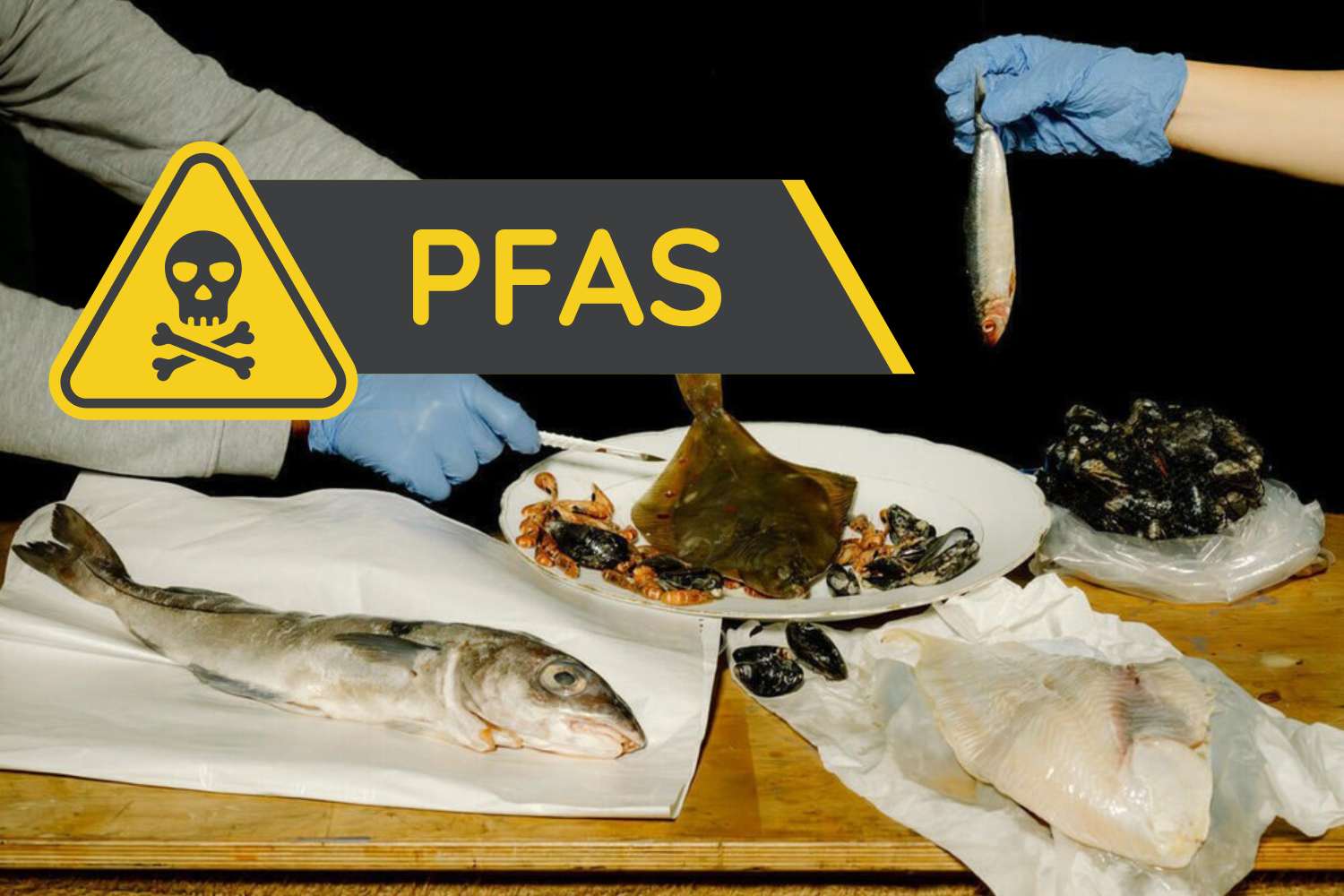Greenpeace once again denounces the problem of PFAS contamination: this time focusing on forever chemicals present in some fish varieties from the North Sea and Baltic Sea

Table of contents
Following investigations in Italy that once again spotlighted PFAS contamination in drinking and mineral water, Greenpeace returns to denounce the risks associated with these substances. This time the scenario is the North Sea and Baltic Sea, where the German section of the environmental organization conducted new research confirming just how widespread and concerning the forever chemicals problem truly is.
According to the data, commonly consumed fish and shellfish such as plaice, herring, turbot, and crab are contaminated with PFAS at levels where a single 5.3-ounce (150-gram) portion can already meet or even exceed the tolerable weekly intake established by the European Food Safety Authority (EFSA).
The investigation
Greenpeace activists collected 17 samples between June and July 2025, purchasing them directly from fishing boats, fish markets, and shops in various German locations, including Hamburg, Bremerhaven, Cuxhaven, and Büsum.
Laboratory tests revealed the presence of PFAS in all analyzed samples. Some species show particularly critical contamination levels: studded turbot, herring, and sole are the most affected, while crabs and other fish varieties show lower but still significant concentrations. Among the most shocking findings is that some samples greatly exceeded EU limits.
The Greenpeace document states:
Regarding exposure through food, comparing the analysis results with EU limit values for fish (PFOS: 2.0, PFOA: 0.2, PFNA: 0.5, PFHxS: 0.2 and Sum-PFAS: 2.0 μg/kg), intended for consumption by all age groups, three samples showed values up to twelve times higher than the legal limit.
There was also one studded turbot sample that showed PFOS and PFNA respectively 1.2 and 1.4 times above limits, while one herring sample registered PFOA nearly ten times above the limit, and one sole showed PFNA more than twice the allowed threshold.
Health risks
The impact on human health is not negligible. For an average-weight adult, consuming a 5.3-ounce (150-gram) portion of turbot or crabs can exceed the tolerable weekly PFAS intake established by EFSA by up to 40%. If consumption is repeated multiple times per week, exposure levels can rise to as much as 321%.
Children are particularly vulnerable to PFAS contamination due to their lower body weight. According to the Greenpeace study, just 1.8 ounces (50 grams) per week of certain contaminated fish or crustaceans—specifically eight of the 17 organisms analyzed—is enough to exceed the tolerable weekly intake established by EFSA. This means even small quantities consumed occasionally can result in significant exposure, making young children particularly at risk compared to adults.
Some of the PFAS we detected can accumulate in the body. This means that health-hazardous exposure grows over time—explained Julios Kontchou, eco-toxicologist at Greenpeace Germany.
Among the most relevant compounds, PFOS (perfluorooctane sulfonic acid) was predominant, present in all samples and often in high concentrations, followed by PFOA, PFNA, and PFHxS.
All detected PFAS are long-chain compounds, known for their strong accumulation in organisms. Analyzing the most regulated substances—PFOS, PFOA, PFNA, and PFHxS—Greenpeace observed that these four substances alone constitute between 64% and 100% of the total PFAS concentration in samples.
The results effectively demonstrate how the persistence of PFAS in the marine environment, despite restrictions and bans, makes this group of chemicals a constant threat to the food chain and consequently to our health.
What are PFAS
PFAS (per- and polyfluoroalkyl substances) are a group of over 10,000 synthetic compounds used for their water-repellent and oil-repellent properties. They are found in everyday products such as technical clothing, carpets, food packaging, and non-stick cookware.
Defined as “forever chemicals” because they do not degrade in the environment, PFAS accumulate in ecosystems and in the human body. Various studies have linked these substances to damage to the immune system, liver, and reproductive functions, as well as an increased risk of certain cancers.
Greenpeace Germany’s investigation fits into a broader picture of European alarm regarding these substances. In Italy, in recent years, various analyses have revealed the presence of PFAS both in tap water in several regions (the situation is notably critical in Veneto) and in some brands of bottled mineral water.
These episodes have already fueled debate over the urgency of limiting the spread of such compounds, which continue to contaminate soil, groundwater, and the food chain.
Despite the European Food Safety Authority establishing very low thresholds for weekly PFAS intake, the chemical industry continues to oppose a total ban. Meanwhile, numerous associations have long been calling on governments to ban the use of these substances in consumer products without exceptions, promoting safe alternatives already available on the market.
Greenpeace Germany once again issues a clear warning: without rapid and binding interventions, so-called “eternal pollutants” will continue to threaten the environment, health, and food safety for a very long time, with all the risks that entails.
Source: Greenpeace.de
